For many years, the only described spinosaur from the United Kingdom was the famous baryonychine Baryonyx. That finally changed in 2021 with the announcement of two additional species: Riparovenator milnerae and Ceratosuchops inferdios. Both were discovered in the Wessex Formation on the Isle of Wight, both are estimated to have been around 8.5 metres in length, and both have been determined to be more closely related to Suchomimus than Baryonyx.
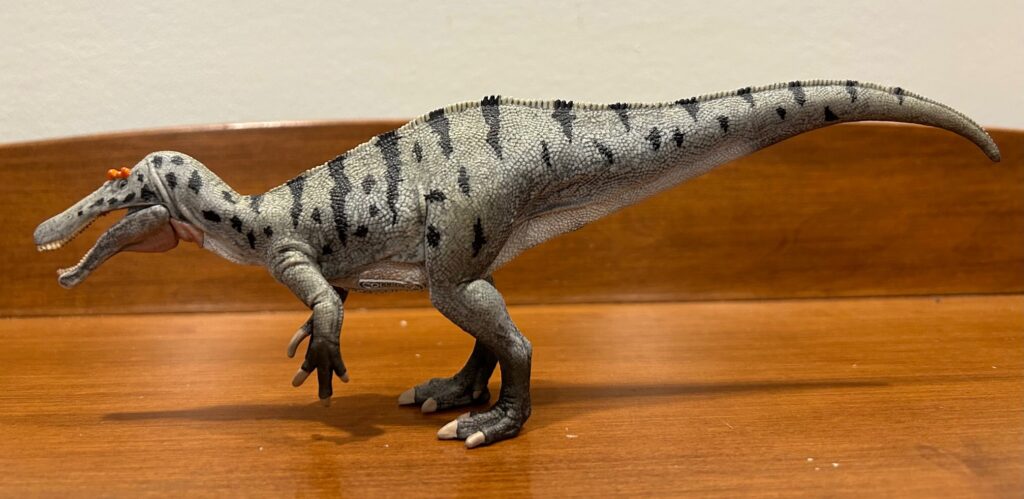
CollectA’s 2023 Ceratosuchops Fishing is a good-sized figure at 24 cm in length and 8 cm in height. It has been sculpted with its tail raised, its torso and head tilting downward slightly, and its arms lowered and spread, as though it were wading in water and scanning for fish, hence its name. And happily, it stands quite well on its own two feet without the need for any support. I never really minded when CollectA was mounting most of its theropods on bases, but I’m glad they’ve discarded them in favour of free-standing figures.
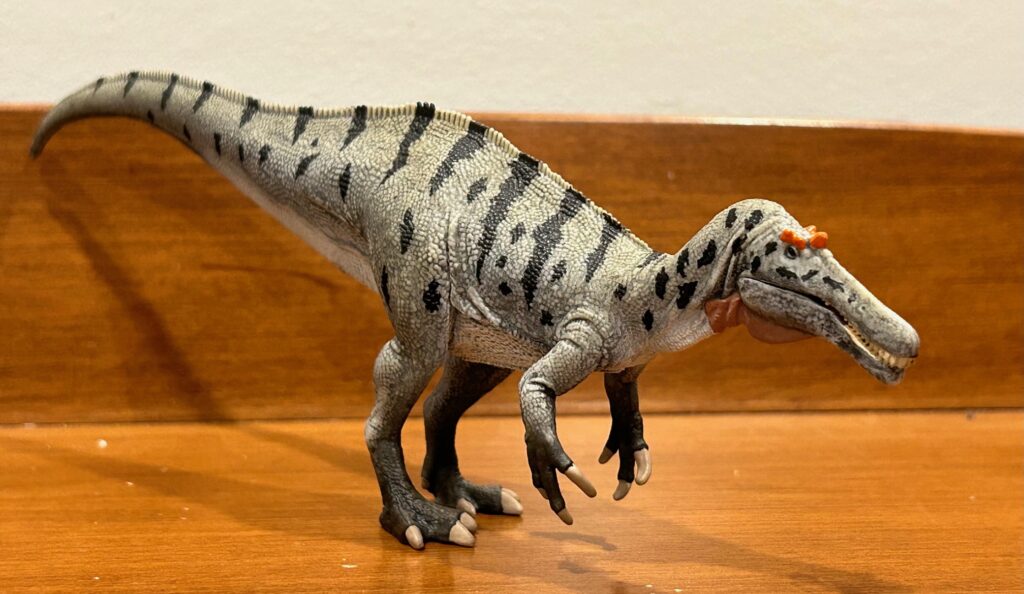
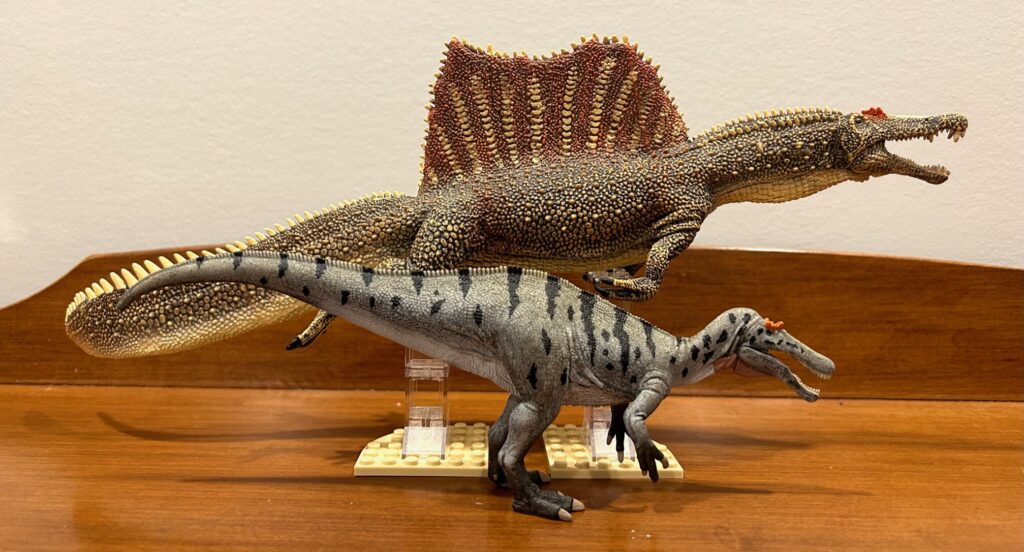
The main colour on this animal is medium grey with a faint dark grey wash to bring out the skin detail. The underbelly is a very pale shade of grey and the hands and feet are dark grey with taupe claws. Very dark grey stripes run from the head to near the end of the tail. The head features glossy black eyes, glossy red-orange crests, taupe teeth, and light pink for the mouth, and darker pink for the pouch on the throat. It’s a solid colour scheme and as you can immediately see from the images below, it makes the Ceratosuchops easily distinguishable from the Baryonyx that CollectA released back in 2019.
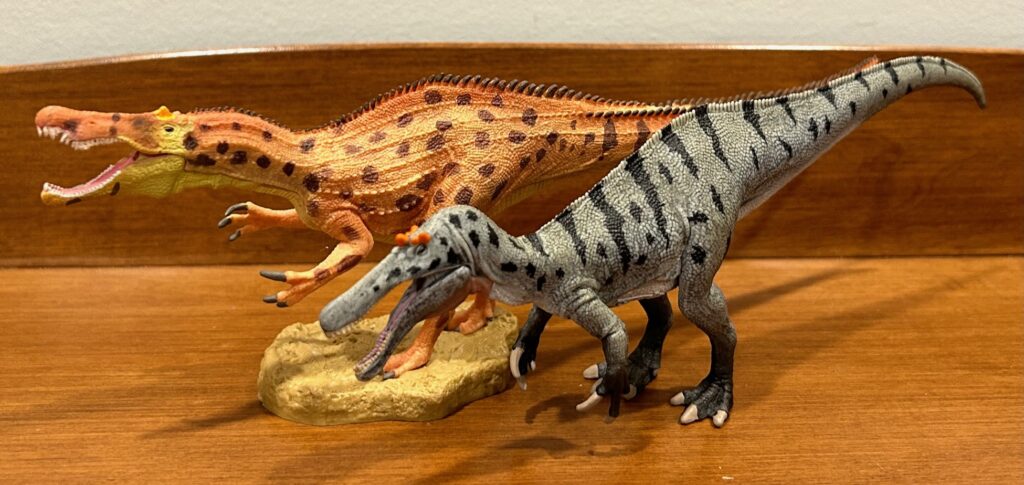

The skin on this toy is entirely covered in small round scales, with thick wrinkles visible on the neck, around the shoulder joints, and along the flanks. A row of thin osteoderms runs down the length of the back and tail. The throat features a baggy sac to assist in swallowing fish prey whole and the hinged lower jaw opens to about 30 degrees. The teeth are small, but sharp. There are no lips as there were on the 2021 Megalosaurus and Neovenator and this year’s Nanuqsaurus, but lips on spinosaurs in general hasn’t caught on as strongly it has with other theropods. The nostrils are set well back from the tip of the narrow snout and there is a vivid array of small horns adorning the cranium. It is this last feature from which Ceratosuchops derives its name, “horned crocodile face.”
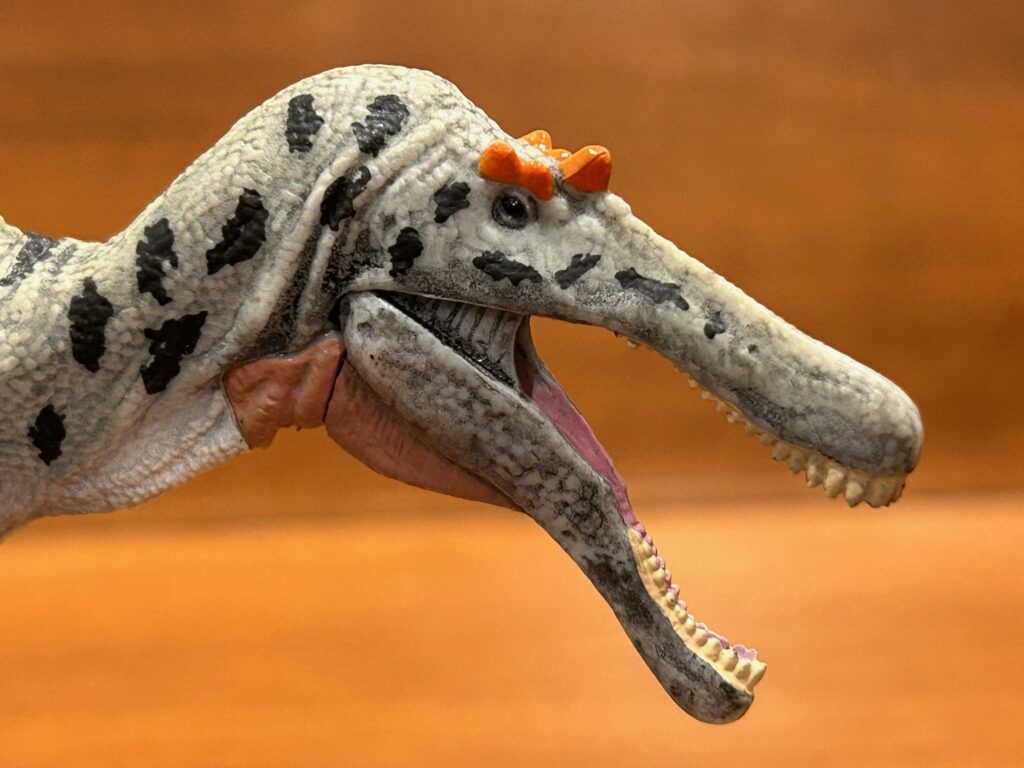
In addition to its long and narrow head, this toy has the other distinguishing characteristics of a baryonychine: a fairly long neck, powerful arms equipped with enormous curved claws on the first digits, tall vertebrae, and a long and deep tail. The arms are pleasingly muscular and the legs are less skinny than they were on certain previous CollectA theropods. Ceratosuchops is currently known only from a few skull fragments, but this is quite a reasonable reconstruction, especially given that the tail of Riparovenator is known to have looked like the one on this toy.
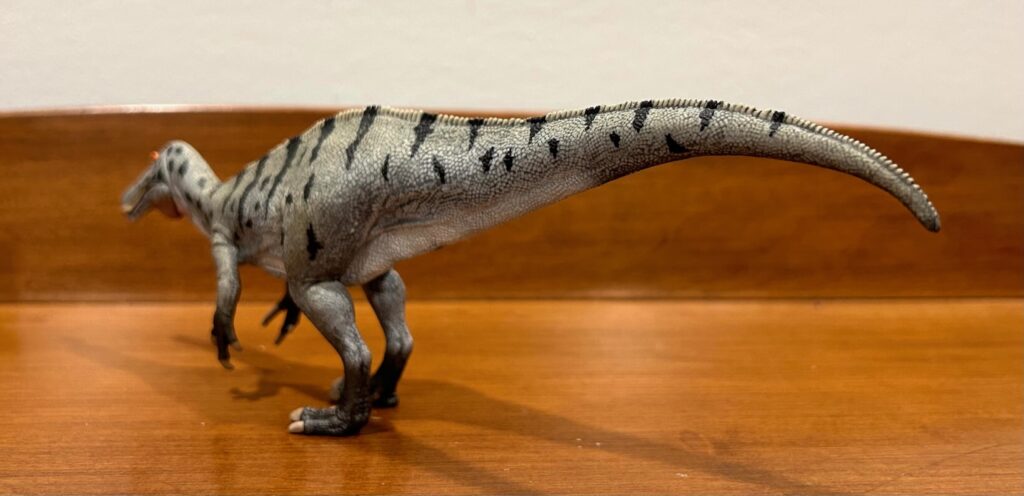
The only anatomical flaw is that the upper jaw is missing the notch that is so characteristic of spinosaurs. The reason for this may be because when the description of Ceratosuchops and Riparovenator was first announced, the accompanying artwork by Anthony Hutchings depicted both animals without the notch in their upper jaw. I don’t mind it myself, and I know for a fact that Darren Naish, who participated in describing them, doesn’t mind it either. Indeed, he was positively delighted when this toy was first announced, and even more so when he acquired one!
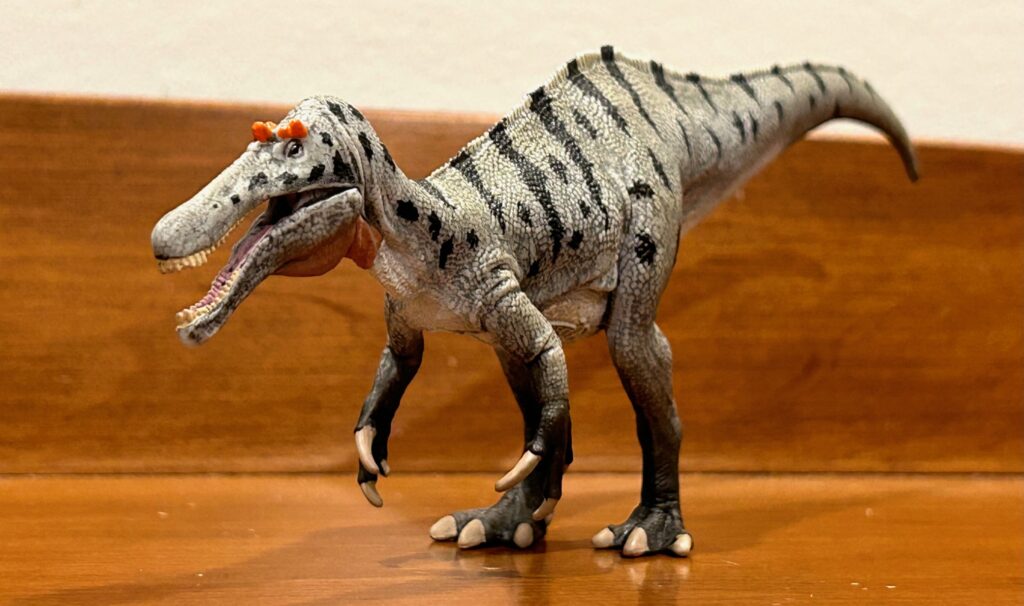
Overall then, the CollectA Ceratosuchops is quite a solid toy. Decent size, great sculpting, stable on its feet, and certainly unique–for now, at least. Definitely worth adding to one’s spinosaur display. And given CollectA’s ongoing penchant for UK dinosaurs, I wouldn’t be surprised if they give us a Riparovenator in the future.
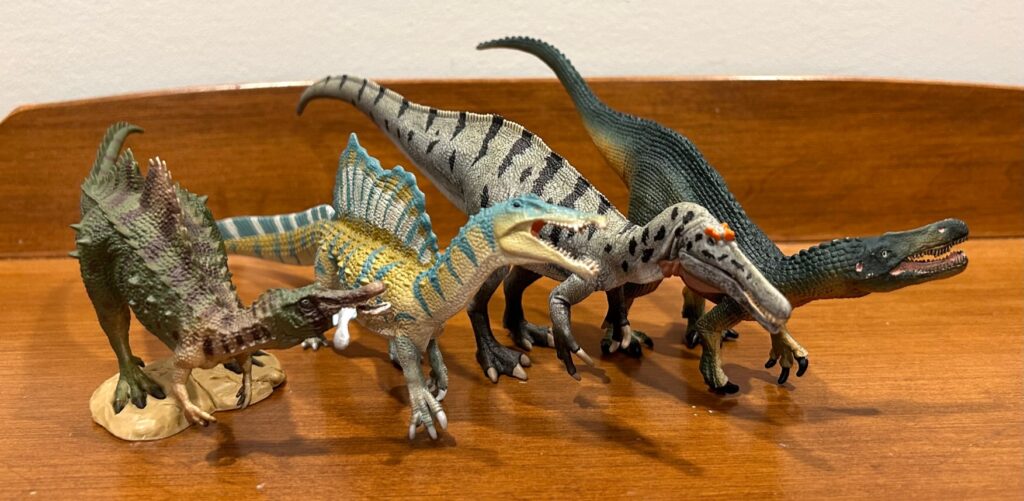
Support the Dinosaur Toy Blog by making dino-purchases through these links to Ebay and Amazon. Disclaimer: links to Ebay.com and Amazon.com on the Dinosaur Toy Blog are often affiliate links, when you make purchases through these links we may make a commission

It does indeed look nice. The lack of notch, ironically, seems to result from Anthony Hutchings’ rendition of the animal being lipped, which simply got lost in translation on the toy.
Moderator, could you take out the OOUJ in my name. I don’t know why my computer put it in. Thank you. And delete this comment. Please and thank you.
24 cm makes this figure 1:32 scale for an animal 7.8 meters in length.
Looks much nicer than I thought! I mainly didn’t get it because it’s only known from such fragmentary material. But I might have to reconsider!